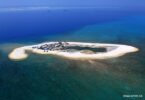On Sunday, Iceland claimed to have become the first country in Europe to have more women than men in its parliament. The general election in the Nordic Country concluded a day earlier, which brought the left-right coalition to the victory stand. First, it was announced that the women candidates have made history by winning 33 seats in a 63-seat parliament, which represents 52 percent of the population of the Nordic nation. However, this honor of Icelanders was not recognized by the election authorities of the country and in a recount, women seats fell down to 30 which is about 47 percent representation of the whole population. After the latest development, the Icelanders could not make a record in the history democratic nations, however they have joined the club of few other nations where women outnumbered men in the parliament including UAE, Cuba, Rwanda, Nicaragua, and Mexico. According to reports, the Icelandic lift-right coalition comprises three parties including the Left-Green Movement, the conservative Independence Party and the centre-right Progressive Party. The rare coalition mixing left and right came about after the 2017 elections, when leaders of the three opposing parties forged a coalition for the purpose of bringing stability to the nation after years of political turmoil. In fact, Iceland has witnessed serious social and political problems during recent decades including corruption, lack of public trust in the judicial system, rising inequality, and political instability. The Panama paper leak exposed more than 600 Icelanders including former Prime Minister Sigmundur David Gunnlaugsson, Finance Minister Bijari Benediktsson and others were accused of having offshore assets.
According to experts, the country witnessed political stability and economic revival during the four-year term of left-right coalition government under Prime Minister Katrin Jakobsdottir in Iceland. Previously, the left-right coalition government of Prime Minister Katrin Jakobsdottir successfully completed its four-year term in office and ended the political instability in the country. According to reports, after the recent general election even after the recount, the left-right coalition retained its supremacy in the recent election despite decrease of seats by the ruling left-green movement of Prime Minister Katrin Jakobsdottir. After recount the left-right coalition got 37 seats in total 63-seat parliament and there are bright chances for formation of a coalition government by the former allies if they agree to walk side by side during next term.
Although coalition parties have expressed willingness to continue their alliance after the election if they get a majority, however despite gaining a majority, the internal landscape of the coalition has changed significantly. Presently, the current Prime Minister Jakobsdottir’s party got third position with 11 seats, finance Minister Bijarni Benediktsson of Independence party stood first with 16 seats and third coalition partner Progressive party got 13 seats in the parliament. Although the current finance Minister Bijarni Benediktsson is eyeing on the position of Prime Minister, he was accused of having offshore assets by the panama paper leak in 2016 and remained under public criticism during the past.
According to Political Analysts, there are eleven political parties in Iceland. If the ruling left-right coalition could not reach a formula for formation of future government, there are chances of creation of new coalitions by the emerging candidate for Prime Minister Office including current Prime Minister Jakobsdottir, Bijarni Benediktsson of Independence Party and Ingi Johannsson of Progressive party during coming days.






